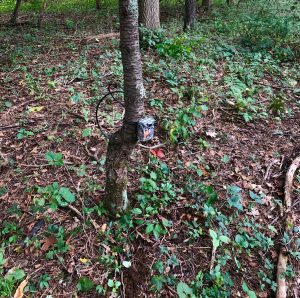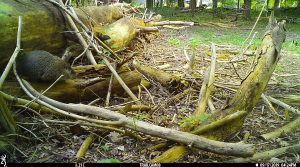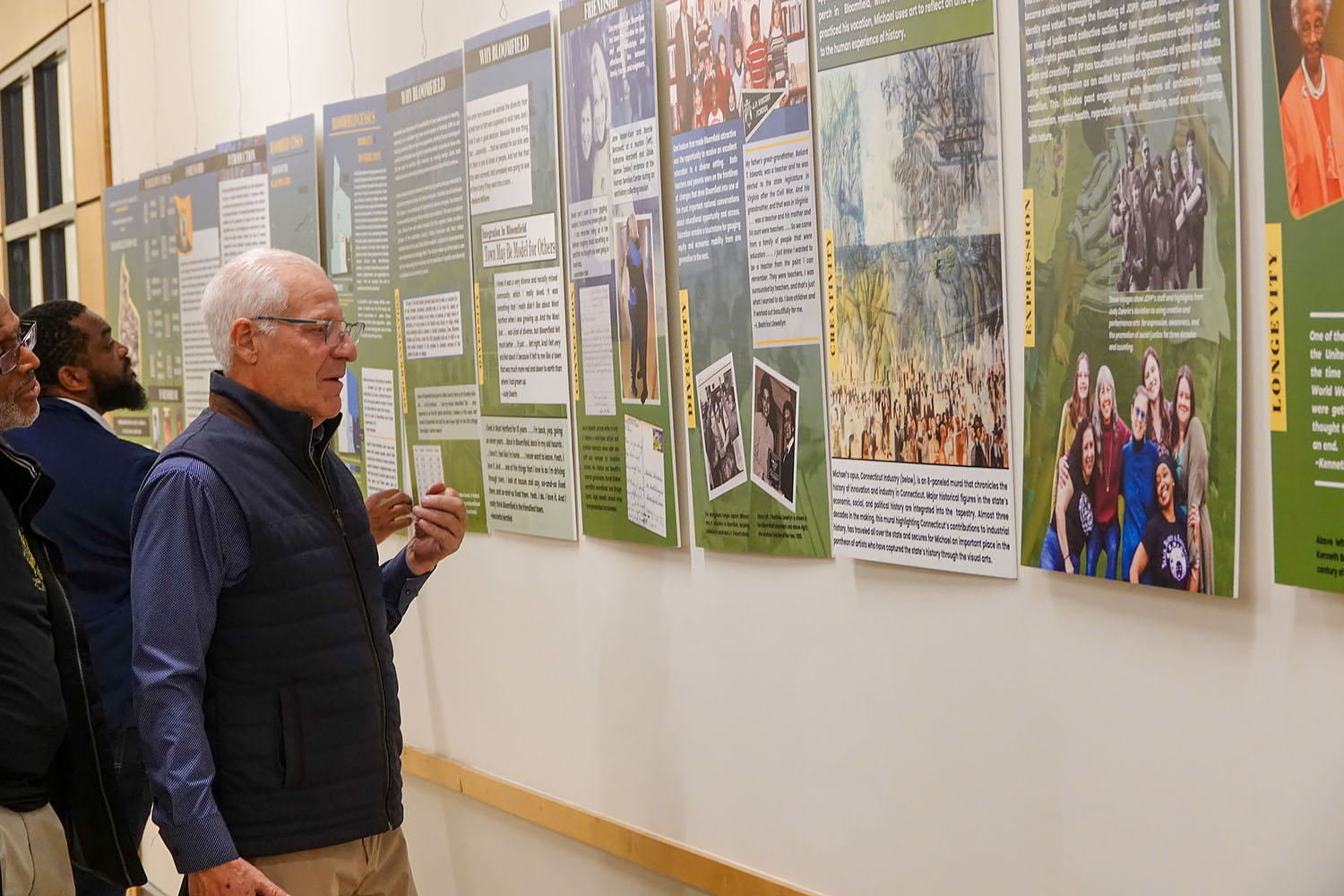Last year, researchers from all 50 states embarked on the largest simultaneous mammal inventorying project ever undertaken, an effort called Snapshot USA. Erin Kuprewicz, Natural History Engagement Specialist and Vertebrate Collections Manager (Connecticut State Museum of Natural History and Biodiversity Research Collections) in the Department of Ecology and Evolutionary Biology, ensured Connecticut was represented in 2019 and is ready to continue gathering data for the 2020 installment of the project.
In response to the accelerating pace of global change, it is important to rapidly conduct an inventory of life, to get a snapshot of this moment in time. The data will be openly available and can be used for ecological inferences and conservation planning, says Kuprewicz.
In 2019, collaborators sampled wildlife at 1530 camera trap sites from 108 survey arrays covering 12 different ecoregions across different urban-wild gradients. Kuprewicz says this resulted in 165,426 unique detections of 80 species of mammals.
Kuprewicz’s Connecticut sub-project is called “Mammals of Rural Connecticut,” for which she placed cameras around Storrs in forested areas, neighborhoods, and rural settings to look at the interface between wildlife and humans, and to document the diversity of animals we share our landscape with.

For those participating, Kuprewicz says the process is fairly straightforward and standardized. The goal is to collect 400 nights of camera trap data from each location, which means ten cameras are placed for at least 40 days and nights starting in September, resulting in thousands of photographs from each location. The cameras are placed at a designated height and are set to be triggered by heat and animal movement to take a series of three photos. This way, data collectors can hopefully capture enough information to accurately identify the species in the photo.
“From 50 states and 400 trap nights each, you end up with an unwieldy data set,” says Kuprewicz.
Though unwieldy, it is an exciting and almost treasure hunt-like process, says Kuprewicz. The results are uploaded onto eMammal, the Smithsonian Institution’s mammal database, where they may be assessed and double-checked by other animal experts.
“These data are extremely useful for local and macroecological research, including the examination of community assembly, anthropogenic effects on wildlife, plant-animal interactions studies, and species-specific population dynamics and conservation action plans,” she says.
The data from 2019 have been compiled, and a paper is currently in review in the journal Ecology. From the first year of the project, Kuprewicz saw quite a bit of diversity in her Connecticut dataset, including bobcats, gray squirrels, skunks, woodchucks, chipmunks, deer mice, coyotes, and the perhaps unsurprisingly single-most detected species – the white-tailed deer. Cameras have been set up once again to capture 2020’s data from the same locations.
Kuprewicz is eager to see how the 2020 data compare to last year, since the pandemic has created some unique conditions, including altered human activities that have likely altered the activities of animals as well.

“We have the baseline from 2019 where we put cameras out and saw how frequently the animals were going through the normal human landscape, and now you have 2020, where humans are not in the landscape as much as they were last year,” Kuprewicz says. “We will compare the 2020 data set and look at the COVID effects. What is happening to the mammals? Maybe their activity patterns are different? Maybe they are using more of the landscape because they don’t have to avoid humans as much as they did last year.”
Much of Kuprewicz’s research takes place abroad, but during the pandemic, a project like this one – where researchers gather data locally then process virtually – is a perfect fit in a time of travel restrictions and distancing requirements.
“Once we have all the photos, the work is virtual and there is a ton of online work to do,” she says. “I think I had tens of thousands of photos to go through last year. This year I’ll be working with an Independent Study undergraduate student and we will be able to continue the work. My student will not have to stop the research project after everyone has to go home after Thanksgiving.”
Kuprewicz says that, though the amount of data can seem daunting, the commitment is worth it, and she hopes to continue with the annual surveys and this important data collection for years to come.
Learn more and keep up with the project by visiting the Snapshot USA homepage, or follow the #snapshotUSA hashtag on Twitter and Instagram. The project and paper in review involves over 100 collaborators lead by primary investigators Mike Cove from the North Carolina Museum of Natural Sciences, Raleigh, NC, Roland Kays of North Carolina Museum of Natural Sciences & North Carolina State University, Raleigh, NC, and Bill McShea of the Smithsonian Conservation Biology Institute, Front Royal, VA. Funding provided by Smithsonian Institution.



